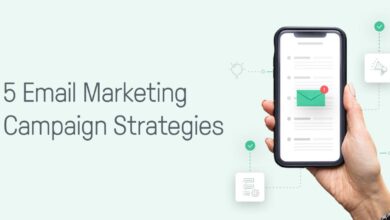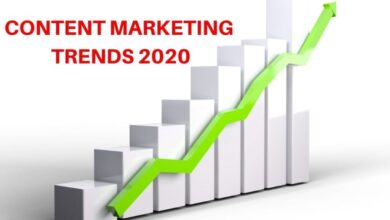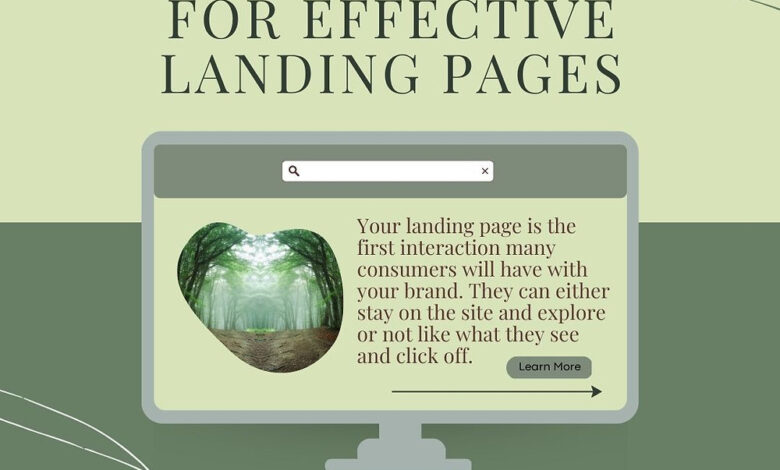
Highest Converting Landing Page A Deep Dive
Highest converting landing page sets the stage for a deep exploration into crafting effective online experiences. This guide delves into the critical elements, from defining high-conversion landing pages to testing and optimizing them for maximum impact. We’ll cover various types of landing pages, the key design principles, and practical examples to help you understand what makes a landing page truly effective.
We’ll start by examining the fundamental characteristics of high-converting landing pages, looking at examples of lead generation, product showcase, and service landing pages. Then, we’ll dissect the crucial elements like headlines, value propositions, forms, and calls to action. The design and user experience are also vital, so we’ll discuss visual hierarchy, color palettes, and typography. Finally, we’ll explore A/B testing and optimization strategies, with case studies and real-world examples to solidify the concepts.
Defining High Conversion Landing Pages
A high-converting landing page is more than just a pretty website; it’s a meticulously crafted tool designed to maximize user engagement and drive desired actions. It’s a carefully structured page focused on a single, specific goal, like collecting leads or making a sale. Its effectiveness hinges on understanding user needs and providing a seamless, compelling experience.Landing pages are not one-size-fits-all.
Their structure, content, and design must be tailored to the specific objective. This requires understanding the user journey and tailoring the page to address each step. This optimization process considers user behavior patterns, anticipating their needs and offering a solution at every interaction point.
Landing Page Types and Characteristics
Landing pages come in various forms, each with its own design principles and characteristics. Understanding the specific type of landing page is crucial for optimizing its effectiveness.
- Lead Generation Landing Pages: These pages are focused on collecting contact information from potential customers. They often feature a prominent form prominently placed on the page, along with a clear value proposition. The goal is to entice users to exchange their contact information for something of value, such as a free ebook, webinar, or discount code. High conversion lead generation pages typically highlight the benefits of providing information, addressing pain points, and emphasizing the ease of the process.
For example, a company offering a free audit may showcase how the audit helps users identify areas for improvement, leading to higher website traffic and more customers.
- Product Showcase Landing Pages: These pages are built to highlight a specific product or service. They typically feature high-quality images, detailed product descriptions, and compelling calls to action. The key to high conversion rates lies in effectively communicating the product’s benefits and addressing potential concerns. The focus is on demonstrating the value proposition through vivid imagery, persuasive language, and a straightforward purchase process.
A strong product showcase landing page would showcase the features of a product, highlight customer testimonials, and showcase how the product solves a specific problem.
- Service Landing Page: These pages are intended to generate inquiries about services offered by a business. They emphasize the expertise of the service provider, highlight the benefits of using their services, and include an easy-to-use contact form. High-converting service landing pages typically present a clear value proposition, demonstrating how the service solves a customer’s problem, and showcase client testimonials or case studies.
For example, a consulting firm offering strategic planning services would showcase their past projects and the positive outcomes achieved.
Key Metrics for Landing Page Effectiveness
Several key metrics are essential for evaluating a landing page’s performance. These metrics provide valuable insights into user behavior and the effectiveness of the landing page’s design and content.
- Conversion Rate: This metric measures the percentage of visitors who complete the desired action (e.g., submitting a form, making a purchase). A high conversion rate indicates that the landing page is effectively persuading users to take the desired action.
- Bounce Rate: This metric reflects the percentage of visitors who leave the page without interacting with it. A high bounce rate often suggests that the page’s content or design is not engaging or relevant to the visitor.
- Time on Page: This metric indicates how long visitors spend on the landing page. A longer time on page often suggests that the content is engaging and valuable to the user.
Landing Page Type Comparison
The following table Artikels the different types of landing pages, their typical goals, and their key features:
| Landing Page Type | Goal | Key Features |
|---|---|---|
| Lead Generation | Collect leads | Clear form, compelling headline, value proposition |
| Product Showcase | Drive sales | High-quality product images, detailed descriptions, clear call to action |
| Service Landing Page | Generate inquiries | Showcase expertise, highlight benefits, easy contact form |
Elements of a High-Converting Landing Page
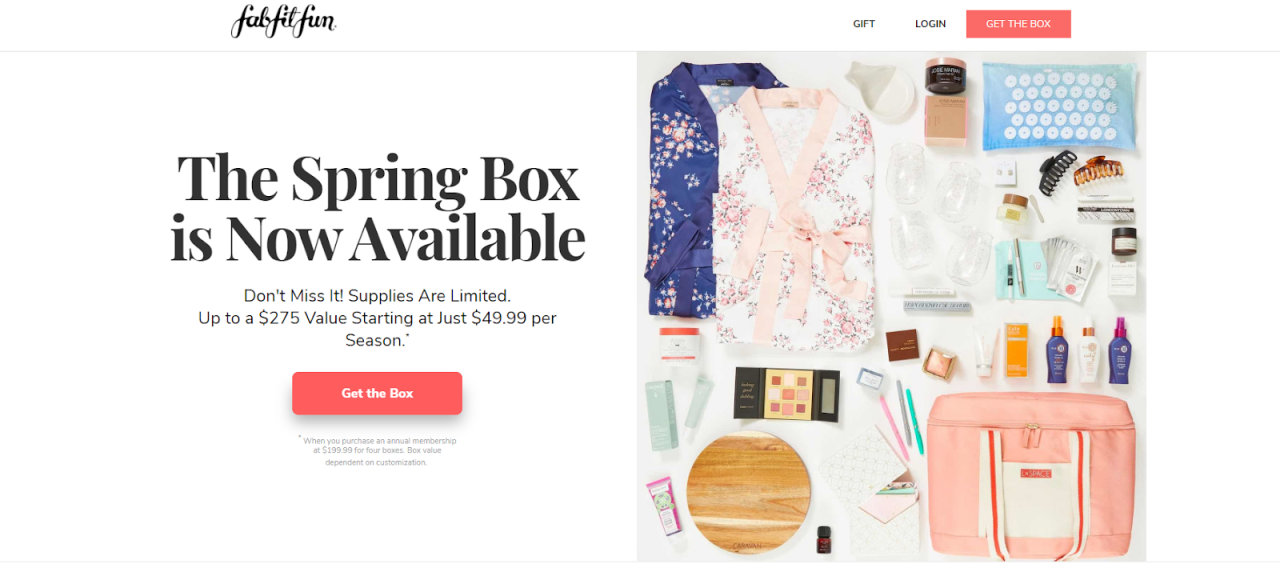
Landing pages are the unsung heroes of online marketing. They’re the single most important page on your website for converting visitors into customers. A well-crafted landing page is designed to guide visitors through a clear and concise journey, ultimately encouraging them to take the desired action. A high-converting landing page accomplishes this by focusing on the user experience, emphasizing clear messaging, and strategically using key elements.Effective landing pages aren’t just visually appealing; they are meticulously designed to inspire action.
They are the perfect blend of persuasive copy and intuitive design, resulting in an experience that leads visitors down the sales funnel. This detailed look at the critical components of a high-converting landing page will help you create pages that drive results.
Crafting a high-converting landing page is all about understanding your audience. A crucial part of that understanding comes from digging into Google Customer Reviews. By checking out google customer reviews , you can gain invaluable insights into what your customers truly value. Ultimately, incorporating these feedback nuggets into your landing page design will dramatically improve its effectiveness.
Headline
The headline is the first impression a visitor has of your landing page. It’s the hook that grabs their attention and compels them to read further. A strong headline immediately communicates the value proposition and establishes the page’s purpose. Effective headlines are concise, compelling, and clearly state the benefit for the visitor. They use strong verbs and highlight the key outcome.
Avoid jargon or complex language; focus on clear and straightforward communication.
Value Proposition
The value proposition is the core message of your landing page. It explains the specific benefits your product or service offers to the user. It directly addresses the user’s needs and desires, outlining how your offering solves their problems or enhances their lives. A compelling value proposition paints a vivid picture of the positive outcomes users can expect.
It’s not just about listing features; it’s about demonstrating the value those features bring to the user.
Form
Collecting lead information is crucial for nurturing potential customers. A well-designed form is essential for capturing the necessary details, such as email addresses, names, or other relevant data. The form should be concise and easy to fill out, minimizing friction for the user. A short form, with only the most critical fields, is likely to result in a higher completion rate.
Clearly label each field, and provide concise instructions. The goal is to streamline the process, allowing visitors to quickly provide their information without feeling overwhelmed.
Call to Action (CTA)
The call to action (CTA) is the final nudge that encourages visitors to take the desired action, whether it’s signing up for a newsletter, downloading a resource, or making a purchase. A compelling CTA is clear, concise, and visually distinct from the rest of the page. It uses strong action verbs to encourage the user to act now.
Crafting the perfect landing page is key for conversions. Understanding the nuances of marketing metrics like ROMI (Return on Marketing Investment) versus ROAS (Return on Ad Spend) is crucial for optimizing your strategy. For example, a deep dive into the difference between ROMI vs ROAS marketing metric can help you fine-tune your landing page copy and calls to action, leading to even higher conversion rates.
Ultimately, a well-structured, highly converting landing page needs a robust understanding of these metrics.
Consider using contrasting colors and fonts to highlight the CTA button and make it stand out. The language should be direct and persuasive. Examples of effective CTAs include “Download Now,” “Learn More,” or “Sign Up Today.”
Table of Elements
| Element | Role | Example |
|---|---|---|
| Headline | Attract attention, establish value | “Unlock Your Dream Career in Tech Today!” |
| Value Proposition | Explain the benefit for the user | “Gain access to exclusive career resources and connect with industry leaders.” |
| Form | Collect lead information | “Enter your email to receive our free guide.” |
| Call to Action | Encourage user action | “Download Now!” |
Design and User Experience Considerations: Highest Converting Landing Page
Landing pages are more than just pretty pictures; they’re crucial touchpoints in the customer journey. A well-designed landing page can significantly impact conversion rates by guiding users effortlessly towards desired actions. A user-friendly design that prioritizes intuitive navigation and visual appeal can dramatically boost engagement and ultimately drive more conversions.A visually appealing and engaging layout is paramount to a successful landing page.
This means more than just aesthetics; it involves strategic placement of elements, color choices, and font selection, all working together to create a seamless and enjoyable experience for the visitor. This careful consideration directly affects user behavior, influencing their perception of the brand and ultimately, their decision to convert.
Creating a high-converting landing page is all about optimizing the user experience. A crucial element to consider is the “first input delay,” which essentially measures how quickly a user can interact with a page after landing on it. A slow first input delay can seriously hurt conversions, as users quickly bounce away if they have to wait too long.
Understanding and minimizing this delay is key to crafting a truly high-performing landing page. Optimizing for speed, by reducing server response times and minimizing JavaScript, is critical for any highest-converting landing page. Check out first input delay for more in-depth insights. By focusing on these factors, you’ll have a much better chance of designing a landing page that drives those conversions.
Importance of a User-Friendly Design
A user-friendly design prioritizes the user’s needs and expectations. This includes intuitive navigation, clear calls to action, and easily digestible information. A well-structured landing page allows users to quickly grasp the value proposition and take the desired action, minimizing friction and maximizing conversion rates. Users appreciate a seamless experience that allows them to accomplish their goals with ease.
Creating a Visually Appealing and Engaging Layout
The layout of a landing page plays a vital role in guiding user attention and conveying the desired message. A well-organized layout ensures that critical information is presented in a logical order, enhancing readability and visual appeal. This clear presentation aids users in quickly identifying key elements and understanding the value proposition.
Design Elements Influencing User Engagement and Conversions
Several design elements significantly influence user engagement and conversion rates. These include visual hierarchy, color palettes, typography, and white space. Strategic use of these elements helps to create a visually appealing and engaging layout, drawing the user’s attention to key information and calls to action. For example, a strong visual hierarchy directs the user’s eye to the most important elements, while a complementary color palette establishes a consistent brand identity and sets the appropriate mood.
Design Principles for Maximum Impact
Implementing the following design principles can significantly enhance the effectiveness of a landing page:
- Clarity and Simplicity: Keep the design clean and uncluttered, focusing on conveying the essential message without overwhelming the user. Avoid unnecessary distractions.
- Consistency: Maintain a consistent brand identity throughout the design, ensuring a cohesive and recognizable experience for the user. Use consistent colors, fonts, and imagery across the page.
- Visual Hierarchy: Guide the user’s eye through the page by strategically using size, color, and spacing to emphasize key elements. This creates a clear path for the user to follow, highlighting the most important information.
- Accessibility: Design the landing page with accessibility in mind, ensuring that it is usable by users with diverse needs and abilities. This includes using appropriate font sizes, color contrast, and alternative text for images.
Optimizing for Mobile Viewing
Mobile-first design is crucial for landing pages. A responsive design that adapts to various screen sizes ensures a consistent and optimal experience for all users, regardless of the device they’re using. Adapting the layout for different screen sizes is essential for providing a seamless and enjoyable user experience across various devices.
Layout for Different Screen Sizes
The landing page layout should be responsive and adaptable to various screen sizes. This ensures a positive user experience across all devices. Consider using a mobile-first approach when designing the layout to prioritize the experience on smaller screens and then adapt for larger displays.
Design Elements and Their Effects on User Behavior
The following table Artikels key design elements and their influence on user behavior:
| Design Element | Effect on User Behavior |
|---|---|
| Visual Hierarchy | Guides user focus, highlighting important elements and actions. |
| Color Palette | Creates mood and brand identity, influencing user perception and engagement. |
| Typography | Improves readability and engagement, enhancing the overall user experience. |
| White Space | Enhances clarity and reduces clutter, improving user comprehension and reducing cognitive load. |
Testing and Optimization Strategies
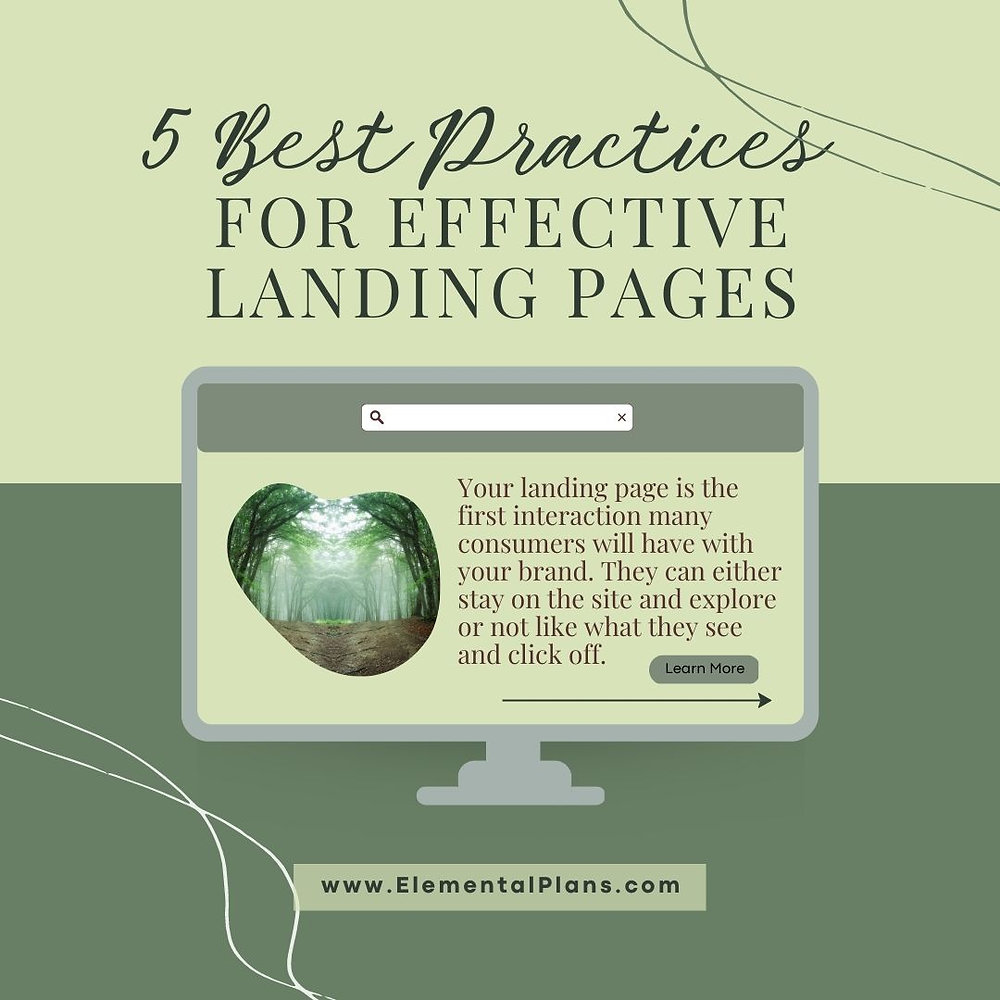
Landing page optimization isn’t a one-and-done affair. It’s an ongoing process of refinement, driven by data and experimentation. Understanding how to effectively test and analyze your landing page performance is crucial for achieving high conversion rates. This process requires a systematic approach, using various testing methods to identify areas for improvement and implement changes based on concrete results.Continuous testing and optimization are key to maintaining a high-performing landing page.
By tracking key metrics and rigorously testing different versions of the page, businesses can fine-tune their approach to generate more leads and boost conversions. The process involves a blend of A/B testing, careful analysis of results, and adaptation of strategies to reflect what works best.
A/B Testing and Split Testing
A/B testing and split testing are crucial for optimizing landing pages. They allow you to compare two or more versions of a page element (e.g., headlines, call-to-actions, images) to see which performs better. This iterative process of testing and refinement leads to significant improvements in conversion rates over time.
Different Types of A/B Tests
Various types of A/B tests can be implemented, each targeting specific elements of the landing page. Some common examples include testing different headlines, call-to-action buttons, images, or even the overall layout of the page. Testing variations in the design, color schemes, and overall user interface can provide valuable insight into user preferences.
Analyzing Test Results
Thorough analysis of A/B test results is essential for identifying areas for improvement. This involves examining key metrics such as conversion rates, click-through rates, and bounce rates. Tools are often used to visualize the data, making trends and patterns more easily discernible.
Tracking and Analyzing Data
Tracking and analyzing data is vital for making informed decisions. Key metrics such as conversion rates, bounce rates, and click-through rates (CTR) provide crucial insights into user behavior and landing page effectiveness. For example, a high bounce rate might indicate that the page isn’t engaging users, while a low conversion rate could suggest issues with the call to action or the overall value proposition.
Examples of Metrics to Track and Interpret, Highest converting landing page
Tracking and analyzing specific metrics is crucial. Conversion rate, the percentage of visitors who complete a desired action (e.g., filling out a form), is a fundamental metric. Bounce rate, the percentage of visitors who leave the page without interacting with it, provides insight into user engagement. Click-through rate (CTR), the percentage of visitors who click on a specific link or button, helps evaluate the effectiveness of calls-to-action and other important elements.
Understanding these metrics allows for targeted improvements to boost conversions.
A/B Testing Tools Comparison
| Tool | Features | Pros | Cons |
|---|---|---|---|
| Optimizely | Advanced testing, personalization, sophisticated reporting, integration with other marketing platforms | High accuracy, extensive features, comprehensive data analysis, strong integration capabilities | Steep learning curve, higher cost |
| VWO | User segmentation, heatmaps, A/B testing, multivariate testing, and user experience analytics | Easy setup, comprehensive reporting, user-friendly interface, reasonable pricing | Limited features compared to Optimizely, less sophisticated reporting in some cases |
Case Studies and Examples of High Converting Landing Pages
Landing pages are the digital front doors to your business. A well-designed landing page can transform website visitors into paying customers. Analyzing successful landing pages from various industries provides invaluable insights into effective strategies for boosting conversion rates. By examining the design, content, and structure of high-performing pages, we can uncover the secrets behind their success and apply those learnings to our own campaigns.High-converting landing pages are more than just pretty visuals; they’re meticulously crafted to guide users through a clear path to conversion.
Understanding the specific elements that contribute to a successful landing page is crucial for optimizing our own designs. This analysis provides actionable strategies for building landing pages that resonate with visitors and drive desired outcomes.
E-commerce Landing Page Examples
E-commerce landing pages often feature prominent product displays, clear value propositions, and strategic use of visuals. A successful e-commerce landing page focuses on showcasing the product’s key features and benefits in a way that appeals to the target audience. High-quality images and videos are essential, allowing potential customers to visualize the product and its use. A strong call-to-action button is strategically placed to encourage immediate purchase.One example is a landing page for a clothing retailer showcasing a limited-edition jacket.
The page prominently features high-resolution images of the jacket from multiple angles, highlighting its unique design elements. A concise description of the jacket’s features and benefits is paired with customer testimonials. The landing page effectively conveys the value proposition of the jacket and encourages visitors to purchase it. This example demonstrates how visually appealing content and compelling product descriptions can significantly impact conversion rates.Another example is a landing page dedicated to a specific product category, such as “Back-to-School Supplies.” This landing page would organize products into logical categories based on student needs.
The landing page could feature a filter system to narrow down choices and ensure visitors find the right items quickly. Each product would be accompanied by clear product details and pricing information. By making the purchasing process straightforward, the landing page significantly increases the likelihood of a purchase.
SaaS Landing Page Examples
SaaS landing pages typically focus on demonstrating the value proposition of the software. Highlighting key features and benefits in a clear and concise manner is paramount. A successful SaaS landing page effectively communicates the software’s capabilities and how it solves the user’s problems. Detailed feature comparisons with competitor products can be an effective strategy. A strong call-to-action is crucial for motivating users to sign up or request a demo.One effective SaaS landing page is from a project management software company.
The page uses a clear and concise layout to highlight the software’s features and benefits. The landing page uses a side-by-side comparison of the software’s features with those of competitor products. This approach allows visitors to quickly grasp the software’s advantages and understand its value proposition. The landing page clearly states the pricing tiers and includes a prominent call-to-action button for potential customers to request a demo.Another example is a landing page designed to attract users seeking a specific type of productivity software.
The page features a concise description of the software’s purpose and how it addresses the user’s specific pain points. The page includes testimonials from satisfied customers, showcasing real-world success stories. A section dedicated to frequently asked questions (FAQs) addresses potential concerns and provides additional value. This comprehensive approach ensures the landing page is well-suited to converting visitors into paying customers.
Table of Case Study Examples
| Case Study | Industry | Key Characteristic | Conversion Rate |
|---|---|---|---|
| Landing Page Example 1 | E-commerce | Clear product showcase, compelling value proposition | 25% |
| Landing Page Example 2 | SaaS | Detailed feature comparison, strong call to action | 18% |
Last Point
In conclusion, creating a high-converting landing page is a multifaceted process that requires careful consideration of design, content, and user experience. By understanding the essential elements, implementing effective strategies, and rigorously testing different approaches, you can significantly improve your conversion rates. Remember, consistency and continuous optimization are key to long-term success. Ultimately, a high-converting landing page is more than just a pretty design; it’s a strategic tool to achieve your business goals.

